Understanding Skydiving Hand Signals
Blog
 Posted by: Curtis White
6 months ago
Posted by: Curtis White
6 months ago
If you’ve ever seen a skydiving scene in a movie, you’re probably under the impression that it’s fairly easy to communicate in freefall by shouting at each other. In reality, it’s practically impossible to talk in the middle of a skydive, regardless of how loud you can yell. So how do skydivers communicate if they can’t talk in freefall? Skydiving signals. They’re an integral part of maintaining safety and coordination on any skydive, and, without hand signals, passing information back and forth would be virtually impossible.
The meaning of these skydiving hand signals ranges from shakas meant to celebrate camaraderie to specific instructions during student jumps. You may have even noticed that skydivers wave their arms before they deploy their parachute. That’s to “wave off,” not just to express joy during an exhilarating moment. But, why do skydivers give a wave-off signal? It says, “I’m about to deploy my parachute, get out of the way!”
These, and other various hand signals, ensure that skydivers can communicate important and sometimes urgent information to each other in situations that could be a matter of safety. Read on to learn the answer to: What are the hand signals in skydiving?
The Importance of Hand Signals in Skydiving
Everything on a skydive, especially in freefall, happens extremely fast. Hand signals allow skydivers to convey and understand information at a glance – a split second that could be the difference between a successful jump and a scary one.
Hand signals can be thought of as dialogue back and forth between skydivers. Calling someone over or reminding them to check their altitude, then waiting for them to complete the command. The wave-off before deployment we mentioned above. These are ways to express intent and allow others to react or interact.
Hand signals become even more important on student skydives. Part of the training new skydivers complete includes memorizing a series of hand signals their instructor will use to direct them during the jump. These signals will help the instructor tell the students how to adjust their bodies, what to pay attention to, and when to pull their parachutes.
Knowing all of the hand signals that others on the jump might use before getting into the airplane is extremely important in avoiding miscommunication or delays in action. There is a list of commonly used hand signals that most dropzones and skydivers adhere to, which makes it easier to communicate regardless of who they’re jumping with. Any signals that go above and beyond the well-known list are usually agreed upon on the ground during the jump planning phase.
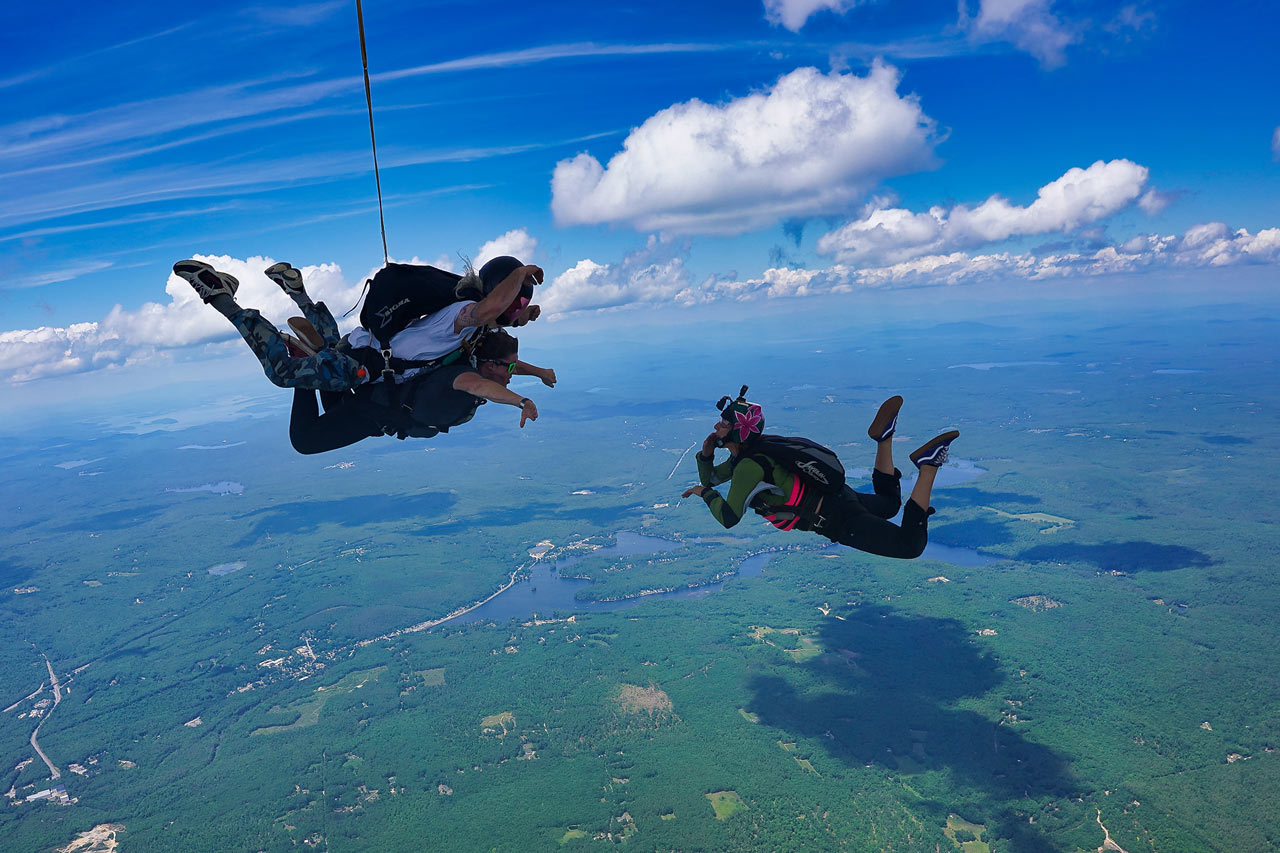
Common Hand Signals
You might be wondering, “What does thumb down mean in skydiving? What is the wave-off signal in skydiving?” If all of these things seem like a foreign language, it’s because they are! Until you understand the meaning and applications of each signal, it’s hard to know how they apply. Here is a list of common hand signals and their meanings:
- The Point – This one is the most important signal there is. It means it’s time to deploy your parachute; no questions asked, no wave off, no delay. Just pull! Instructors will often use this if the student has lost altitude awareness or if they are further away from the dropzone than planned and need more time to make it back.
- Thumbs Down – Not as bad as you think. Thumbs down just means you need to arch harder. The downward reference is connected to what you should be doing with your hips: pushing them harder toward the ground.
- The Circle – This one looks like an ‘O’ with your thumb and fingers. The circle refers to the circle of awareness, or what every skydiver should be focusing on during the jump: heading, altimeter, left instructor, body position, and right instructor. In other words, follow the circle to check all of the things you should be aware of!
- The Fist – A somewhat threatening effect, but the fist is actually just a reminder to reach back and touch your deployment hacky as practice for the real thing.
- The Peace Sign – A peace sign with straight fingers means that you should extend your legs straighter behind you. Bent fingers mean that the legs need to bend and come in a little bit. If you look at the signal, it looks exactly like the message it’s sending.
- The Shaka – Yeah brah! While the shaka may mean ‘Send it!’ to experienced skydivers, instructors use this hang loose symbol to remind students to check their arm position. Again, the thumb and pinky sticking out look a little like a person’s extended arms, so it’s how we send the message that arms should be at 90-degree angles.
- The Wave Off – As you know, this one says: Get out of my way! The lowest jumper always has the right of way, so when it’s time for them to deploy, they’ll let everyone know it’s about to happen to avoid any potentially life-threatening collisions.
- Thumbs Up – If you guessed about this one, you’re probably right. It means, “Great job!” Just like it does on the ground.
Freefall vs. Canopy Communication
One of the big differences between the freefall and canopy portions of the skydive is speed. Skydivers fall at about 120 mph during freefall, and parachutes fly at a forward speed of about 20 mph. This change in speed means that the noise of the wind in your ears during the parachute ride is greatly decreased, and you’re able to hear other sounds around you.
On a tandem skydive, this means that the student and instructor can actually carry on a full conversation under canopy – the same way they would on the ground. No need for hand signals! And individual skydivers under separate canopies could possibly yell to each other, but there are still some signals skydivers use to communicate with people far away.
For instance, kicking your legs while under canopy generally acts as a question: “I see you, do you see me?” And, kicking in response confirms that the awareness is mutual. It’s a good way to avoid canopy collisions and keep track of everyone flying in the same airspace.
This is your sign to make a skydive! Book your jump with us today and come learn the language of the sky!
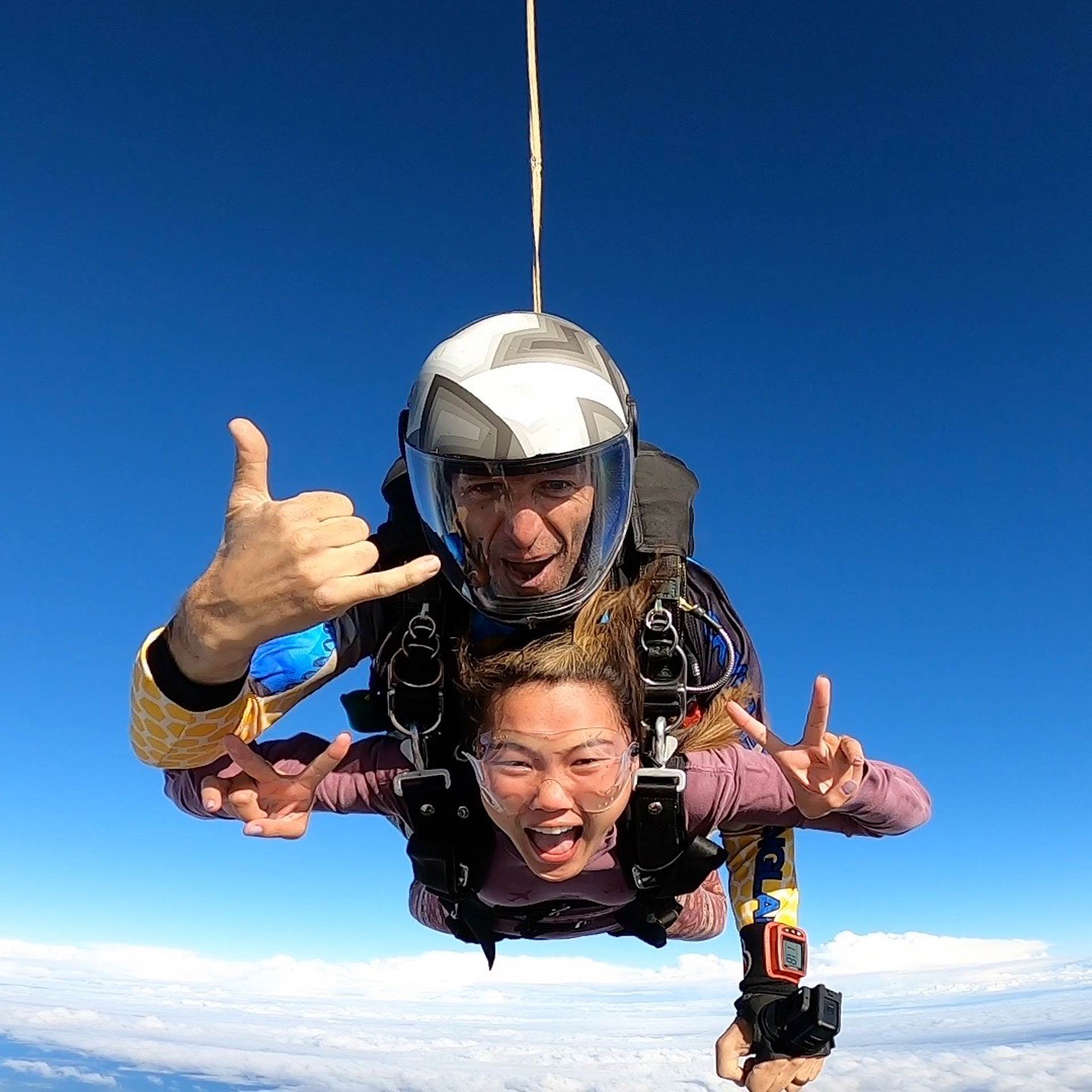
You May Be Interested In:
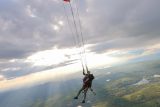
Discover Skydiving Near New Hampshire
2 days ago by Curtis White
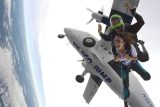
Everything You Need to Know About Jumping Out of a Plane
2 months ago by Curtis White

HALO Skydiving and High Altitude Jumps Explained
4 months ago by Curtis White
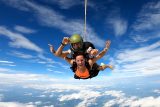
Jump Jitters: Overcoming the Fear of Skydiving
5 months ago by Curtis White
Enter to Win a Free Skydive
Join our email list and enter to win a free tandem skydive. Drawings in April and December; winner announced on social media.
You’ll get a $10 coupon toward a tandem just for signing up! Must be 18 and under 240 lbs to jump.
*By submitting this form, you are consenting to receive marketing emails from Skydive New England, 40 Skydive Lane, Lebanon, Maine 04027. You can revoke your consent by using the SafeUnsubscribe link located at the bottom of every email. Emails are serviced by Constant Contact.
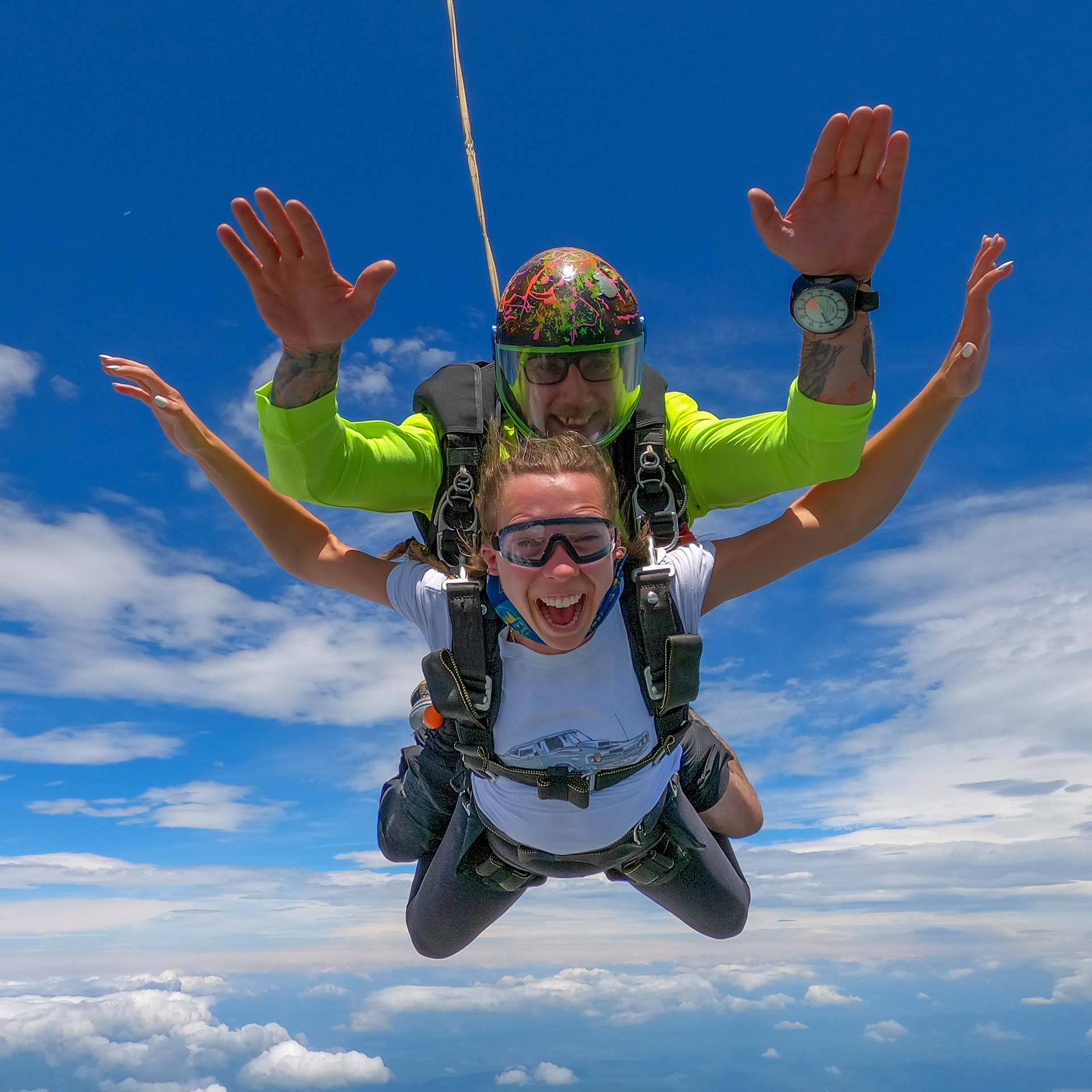
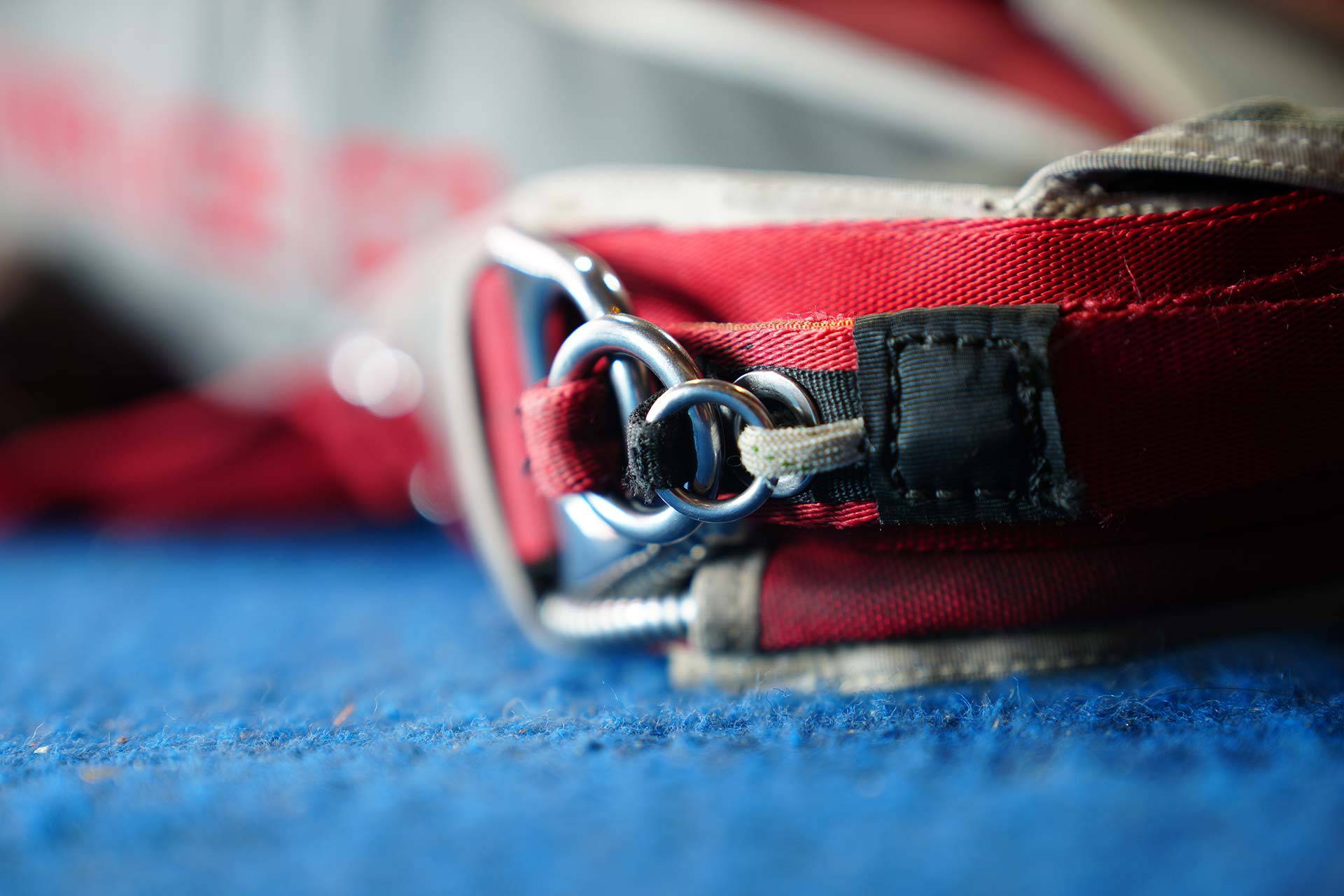
Even More Wicked-Fun Than It Looks!
Come see why the biggest DZ in New England is also the best.
